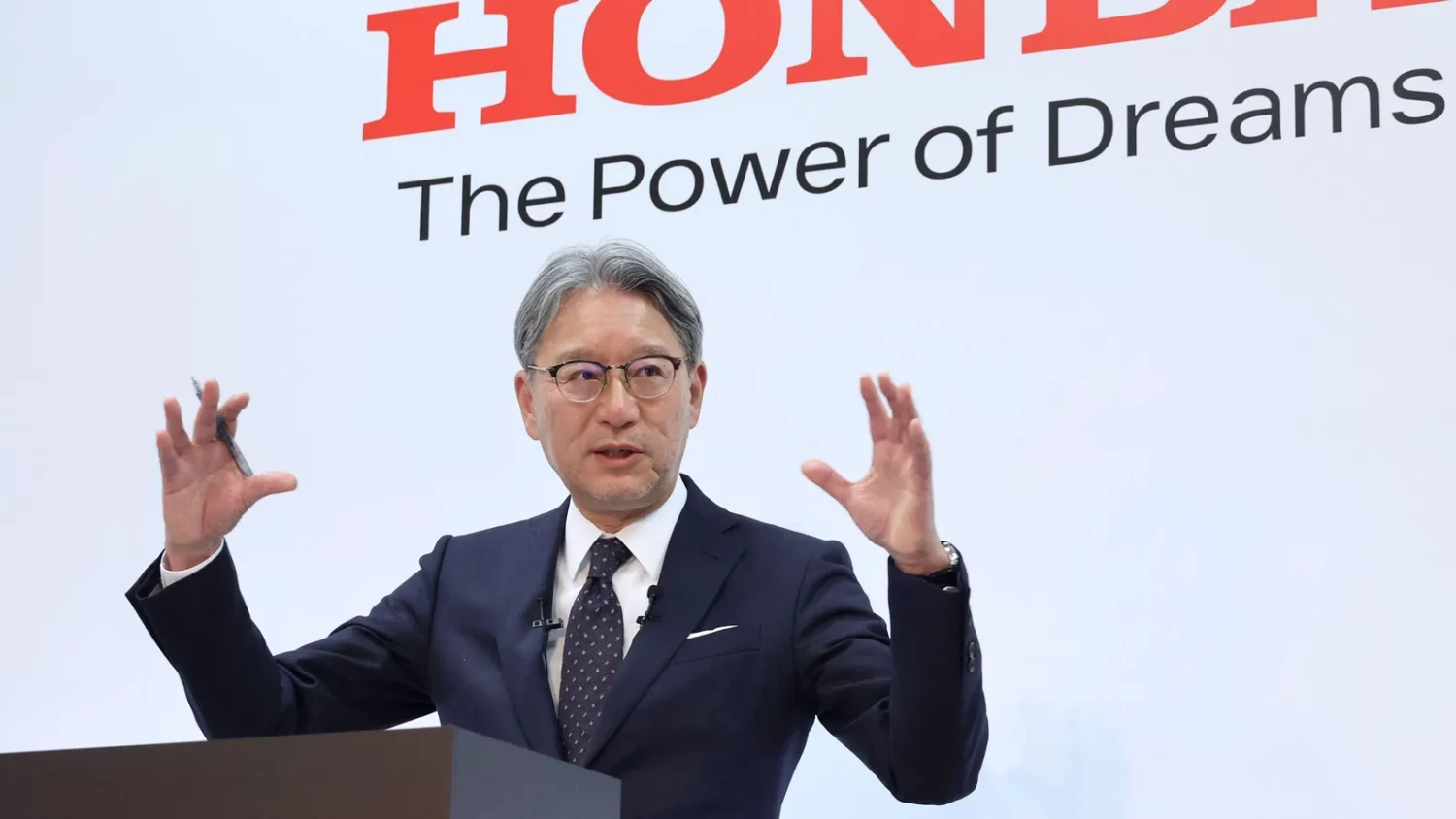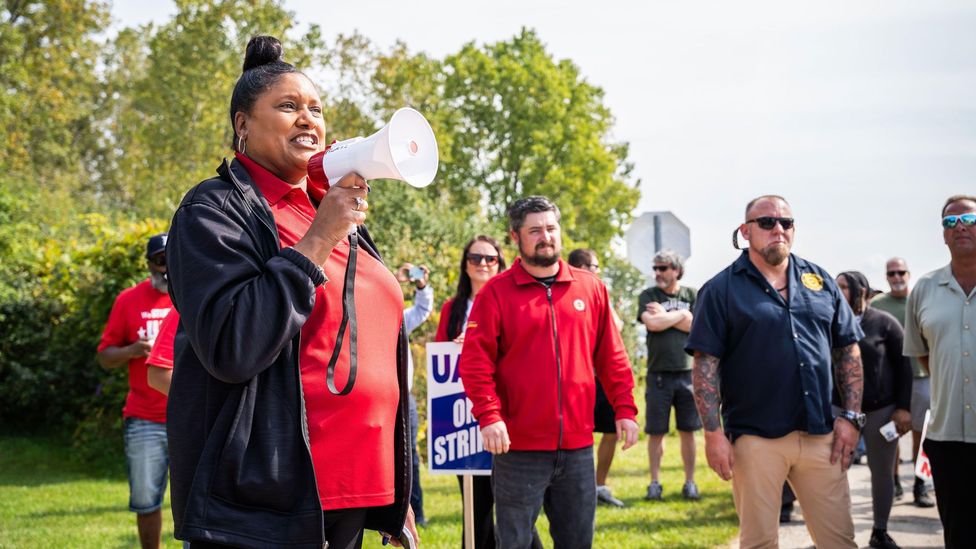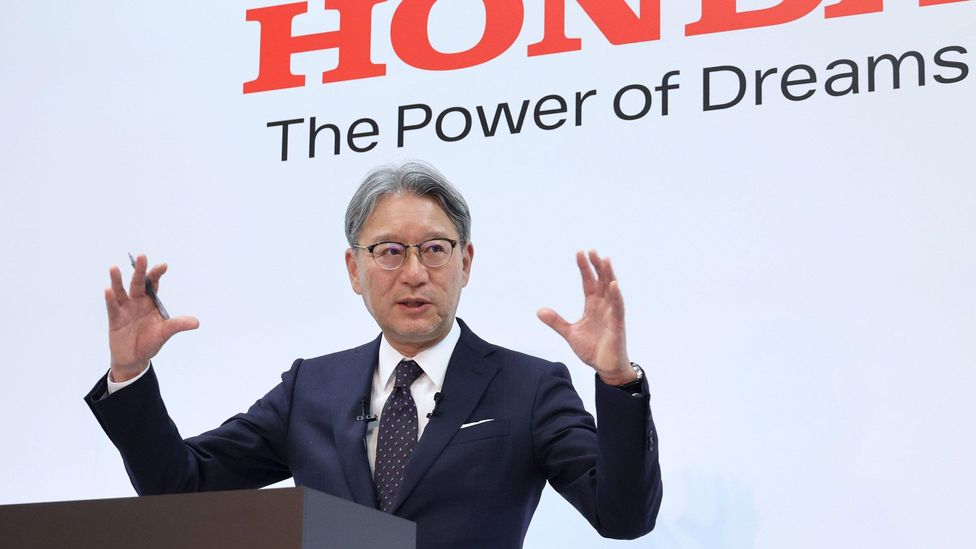This article is more than
1 year oldUS auto strike: Eye-popping CEO pay

At 23:59 on 14 Sept, roughly 13,000 workers at three of the largest automakers in the US went on strike. After eight weeks of unsuccessful negotiations among the United Auto Workers union (UAW) and the companies – General Motors (GM), Ford and Stellantis – workers walked off the job when contracts expired. Thousands more workers have since joined the strike in 38 locations across 20 states, and President Biden is expected to show support by walking the picket line this week.
At the top of the UAW's demands is a 40% pay increase across four years (that number was lowered to 36% a few days after the strike began, after ongoing negotiations). Union president Shawn Fain has made the canyon-like gap between CEO and worker pay the foremost banner of the strike.
"We're fed up with falling behind," Fain said in an interview with CBS's Face the Nation. He said the distance between CEO and auto worker reflects the ever-widening economic inequality in the US. "This is what's wrong with our economy, and this is what's wrong with America right now," he told host Margaret Brennan. "The billionaire class keeps taking more and more, and the working class keeps getting left behind."
The strike has put the enormous pay of American CEOs in the spotlight. Mary Barra, the CEO of GM, made $29m (£23.4m) in 2022 – 362 times the median GM worker pay. The same year, Stellantis's CEO Carlos Tavares made $24.8m (£20m), or 365 times the average worker pay; and Ford's CEO Jim Farley made $21m (£17m), or 281 times the median worker pay.
CEO pay in the US has grown 1,322% since 1978, according to the Economic Policy Institute. Such astronomical CEO pay is a very American problem. Not only do American CEOs far out-earn their workforces, they also out-earn their peers in other countries.

For instance, Japan – home to companies including Toyota, Nissan, Mitsubishi and Honda – has long been a top exporter of automobiles. Yet Japanese automaker CEOs are paid far less than their US peers. Akio Toyoda, the former CEO of Toyota (the country's largest employer), was paid ¥999m ($6.7m) in 2022. Honda CEO Toshihiro Mibe was paid ¥348m ($2.3m) in 2022, and Nissan CEO Makoto Uchida made ¥673m ($4.5m).
This shows up in Europe, too. In the UK, Aston Martin CEO Amedeo Felisa brought in £756k ($925k) for his eight months on the job, after he took over as executive in May 2022. And in Germany, Oliver Zipse, the CEO of BMW, earned €5.3 ($5.6m) in 2022. Ola Källenius, CEO of Mercedes-Benz Group, earned €7.1m ($7.5m) the same year. Oliver Blume, who is chairman of the board of management of Porsche, made €7.4m ($7.9m). Blume is both head of Porsche and, as of 1 September of last year, head of parent company Volkswagen Group as well.
There are several reasons why American executives across many industries take home far more – and US patterns are showing up in other countries. Can striking workers change this?
A different pay structure
American auto CEOs make a lot – as do top brass across many industries in the US. Globally, the base salary of corporate chief executives is somewhat comparable. Yet the size of variable compensation is wildly different – and it's one of the reasons US CEOs make so much more than many executives abroad.
In Japan, for instance, pay is more or less evenly split among salary, short-term incentives and long-term incentives. And even though CEOs in the UK, Germany and France out-earn their Japanese counterparts – sometimes by more than 100% – their compensation is similarly apportioned, with base salary making up about a quarter of pay, according to a 2023 analysis by consulting firm Willis Towers Watson (WTW), seen by BBC Worklife.
Comparatively, however, salary plays a small role in US CEO compensation. For instance, in 2022, Stellantis CEO Tavares's salary – or fixed pay – constituted just 9% of his $24.9m award for the year.
The bulk of US CEO pay – sometimes 90% or more – is tied to performance. For executives across industries, simply, as their company makes more money, their earnings increase
So, instead of a high salary, pay packets for executives in the US generally include much larger short-term and long-term incentives – like bonuses and stock options – according to WTW. Indeed, for Tavares, the remainder of his compensation – or variable pay – was awarded in fringe benefits, stocks and a post-retirement pension. His total earnings in each category vary every year, and his total remuneration is contingent on how profitable the company is for its shareholders.
The bulk of US CEO pay – sometimes 90% or more – is tied to performance. For executives across industries, simply, as their company makes more money, their earnings increase. Performance-based pay is meant to incentivise CEOs to make a business as productive as possible, maximising value for shareholders.
However, not everyone thinks talent at the top is what actually drives profitability; among others, The Economic Policy Institute is critical of this theory, arguing that luck is a stronger determinant of business success than the CEO's acumen. Further, employees seldom reap the benefits at the same rate their executives do.
The view from abroad
There are also cultural factors that amount to ultra-high pay, says Joseph Foudy, a professor at the Stern School of Business at New York University, who studies corporate governance and the auto industry.
For instance, the US is generally very pro-market, he says, and enjoys the idea of upward mobility. And large shares of publicly traded companies are owned by several shareholders, rather than individual entities, so CEOs are less beholden to a single powerful unit that can move to replace them.
Additionally, in the US, there are no legal mechanisms to control CEO pay. Although there are some exceptions, most countries don't have laws to cap executive pay, either. Yet abroad, compensation remains comparatively limited.

Foudy cites Japan, where the company's own executives have seats on the boards that control remuneration. There is nothing keeping these executives from raising their own pay, but they generally don't. He says this is largely because "the primary constraint [on CEO pay] in most other countries is not legal. It's a norm. It's the sense that there'd be a blowback from shareholders, from banks, from government regulators that do business".
Stellantis CEO Tavares experienced this kind of cultural blowback when he was up for a pay raise in 2022. French investors made such a clamour that the proposed compensation was rejected in a non-binding vote. As one investor put it: "Is this extremely high remuneration socially justified when the group will probably have to face massive restructuring with job cuts because of production overcapacity and a doubling up after the merger?" In 2023, however, shareholders at the annual general meeting ultimately voted to approve Tavares's renumeration.
However, some countries have been slowly moving towards a model of CEO compensation that resembles the way many executives are paid in America.
This is the case in Japan, where CEO compensation structure has been shifting since 2015, when changes to the corporate governance code encouraged businesses to adopt performance-based compensation structures. According to WTW analysis, 2015 marked an acceleration in executive compensation.
"Japan is observing hot discussion on how to achieve sustained, structural pay increase for employees," says Sumio Morita of WTW, including extending long-term incentives to senior managers below the executive level.
In other words, they're moving towards the model in which their base salary is a smaller percentage of compensation, and the bulk of their earning potential is pegged to profit. As of 2022, executive compensation has more than doubled over its 2009 average. Per WTW's analysis, CEO pay in Japan increased 35.5% in the last year.
A global effect
As executive pay continues to grow around the globe, UAW strikers are looking to close this gap between CEO and worker pay in the US auto industry. A strong and active union, like the UAW, may be key in achieving that.
"In general, the financialisaton of economies since the 1980s and the decreasing strength of trade unions is a big part of why CEO to worker pay ratios increased so much globally between 1980s and 2000s," says Andrew Speke of the High Pay Centre, a UK think tank that researches corporate governance. "Countries where there is stronger regulation of businesses and corporate governance in particular, and where there is higher trade union density tend to have lower pay ratios."
Speke believes the outcome of this strike could have global implications. "The US is still the most influential country in the world, particularly among liberal-democratic, developed economies. What succeeds in the US can act both as a model and as inspiration to labour movements elsewhere in the world," he says. "Perhaps from a macro perspective, it can represent a shift in relations between labour and capital more generally."
Newer articles
<p>The ceremony was held in Moscow amid a tense geopolitical situation and diplomatic rift with the West</p>
Tiger’s heartbreaking daughter revelation
US intel admits ‘potential for Russian military breakthrough’ in Ukraine conflict
West has a decision to make – Putin
Free Madonna concert draws crowd of 1.6m to Brazil’s Copacabana beach
Police make arrests in killing of B.C. Sikh activist Hardeep Singh Nijjar
Labour's Sadiq Khan easily wins record third term as mayor of London
Fans stunned by TV star’s weight loss
Hamas tells Qatari, Egyptian mediators it agrees to ceasefire proposal
Craig David, a hitmaker since 2000, is still getting audiences dancing
